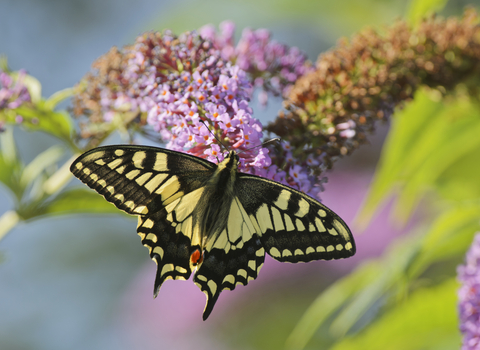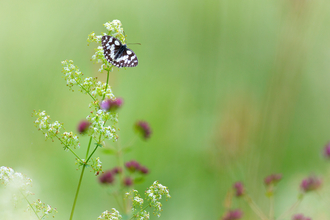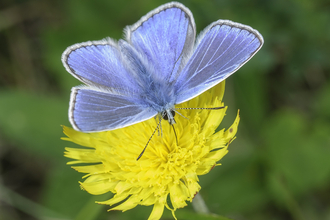The swallowtail butterfly
Meet the largest and one of the most localised butterflies in the UK - the swallowtail. Adults emerge from their over-winter chrysalises, drying their wings in the safety of the reedbeds before fluttering into view; bright and spectacular. This butterfly’s swallow-like tails mimic antennae, which together with two red and blue ‘false eyes’ confuse predators into thinking it is a two-headed butterfly. Even as caterpillars, they are impressive beasties with bulging horns to frighten predators, and two horn-like orange scent glands that, when threatened, emerge from the back of its head, producing a smell that has been likened to pineapple.
The swallowtail is certainly a beauty and well worth waiting for
Find swallowtail butterflies
The British race of the swallowtail butterfly is now limited to the Norfolk Broads, choosing sites with a vigorous growth of milk parsley, where it lays its eggs on the tallest plants. Visit one of these special places on a windless day between late May and mid-July, and with a bit of luck you will spot one of these rare British insects.
Norfolk Wildlife Trust
- Alderfen Broad
- Barton Broad
- Cockshoot Broad
- Hickling Broad (marsh harriers, bearded tits and common crane could all add to your day’s highlights)
- Ranworth Broad (you might even spot a swallowtail before leaving the car park!)
- Upton Broad and Marshes
What to look out for
Do some research before you visit, and find out how to identify milk parsley, the host plant where the females lay their eggs singly on the leaves that will provide the caterpillars’ food supply. Check any plants you see, as the impressive green and black stripy caterpillar may be hidden in the leaves. The adult butterflies feed on all species of flowers but prefer yellow and purple ones so can often be found on red campion and yellow iris.
Pick a still, warm day, and take your binoculars: swallowtails are very fast flying butterflies, and don’t often sit still.
If you can't get to these places
On rare occasions, migrant swallowtails arrive here from the continent, and in 2014 they were spotted hatching in Sussex. These continental arrivals prefer downland, where they lay their eggs on wild carrot. If you keep your eyes peeled along the south coast, you could be in luck and catch a glimpse of a rare European wanderer.
More wildlife experiences
From seeing colourful wildflowers to spotting magnificent birds of prey, we can help you get closer to wildlife across the UK.







